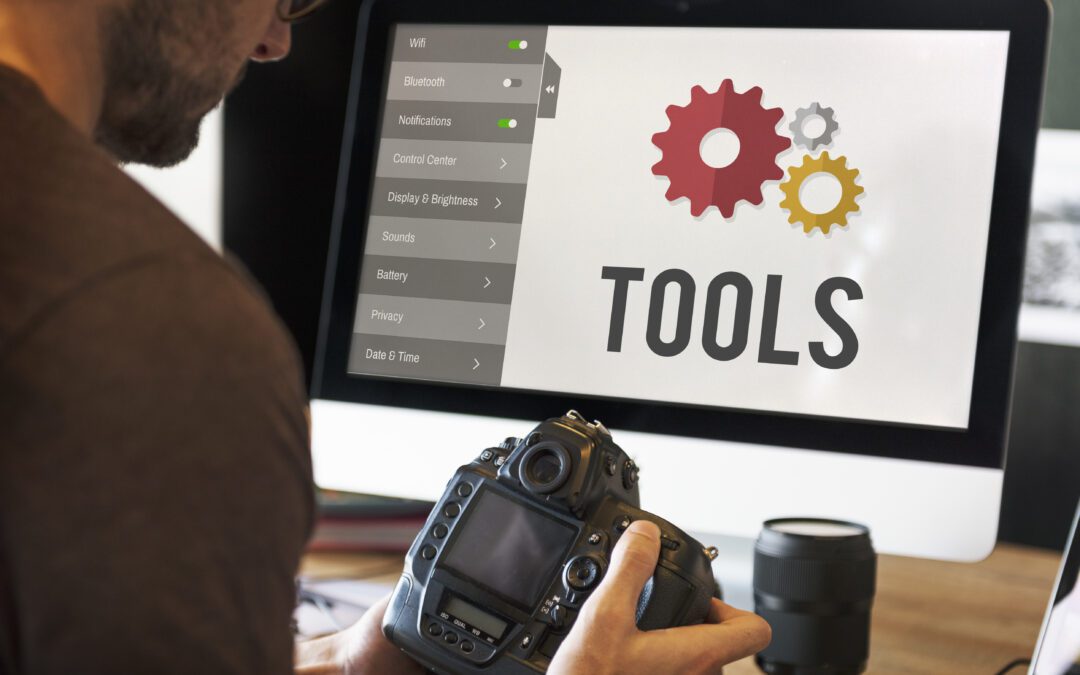In the fast-paced world of business, efficiency and cost-effectiveness are key drivers of success. Procurement tools play a vital role in achieving these goals by automating, streamlining, and enhancing the procurement process. These tools not only save valuable time but also ensure that companies are getting the best deals and maintaining healthy vendor relationships.
In this article, we’ll explore what procurement tools are, their importance, and how they can benefit your organization. By the end of this guide, you’ll have a clear understanding of how these tools work and why they are essential for modern procurement management.
What Are Procurement Tools?
Procurement tools are software applications designed to automate and simplify the procurement process, from sourcing and purchasing to payment and contract management. These tools help businesses manage suppliers, track spending, and ensure compliance with organizational policies. They aim to reduce manual effort, increase accuracy, and enhance transparency in procurement operations.
Key Functions of Procurement Tools
-
Supplier Management
Procurement tools provide a centralized platform to manage vendor relationships. They allow procurement managers to track supplier performance, evaluate compliance, and foster strong partnerships. -
Purchase Order Management
These tools facilitate the creation, approval, and management of purchase orders, ensuring that businesses can quickly respond to procurement needs while maintaining proper documentation. -
Contract Management
Procurement tools help organizations manage contracts with suppliers, ensuring compliance with terms and conditions and helping prevent potential disputes. -
Spend Analysis
Many procurement tools include analytics features that provide insights into spending patterns. This helps businesses identify opportunities for cost savings and negotiate better terms with suppliers. -
Invoice Management
Procurement tools also offer functionalities for managing invoices, tracking payments, and ensuring that vendors are paid on time while reducing errors.
Benefits of Using Procurement Tools
Procurement tools offer a range of advantages that can significantly improve an organization’s efficiency and cost-effectiveness. Below are some of the key benefits.
1. Increased Efficiency
Procurement tools automate several steps in the procurement process, reducing the time required to complete tasks such as issuing purchase orders, tracking deliveries, and managing invoices. By automating repetitive tasks, procurement teams can focus on more strategic activities, improving overall efficiency.
2. Enhanced Accuracy and Compliance
Manual procurement processes are prone to human errors, such as incorrect data entry or missed deadlines. Procurement tools help eliminate these errors by automating calculations, approvals, and tracking. Additionally, these tools ensure compliance with organizational policies and regulations, reducing the risk of audit issues.
3. Better Supplier Relationships
With a centralized system for managing supplier information and performance, procurement teams can foster better relationships with their suppliers. Procurement tools help businesses track supplier performance metrics, such as delivery times and product quality, which helps in negotiating better terms and resolving disputes efficiently.
4. Improved Decision-Making
Procurement tools offer detailed analytics that provides valuable insights into spending patterns, supplier performance, and market trends. With this data, procurement managers can make informed decisions about where to allocate resources and which suppliers to partner with.
5. Cost Savings
By providing insights into spending patterns and offering tools for better supplier negotiation, procurement tools help businesses save money. Furthermore, these tools can help identify inefficient procurement practices and suggest more cost-effective alternatives.
Types of Procurement Tools
There are several different types of procurement tools available, each designed to cater to specific aspects of the procurement process. Let’s look at the most common ones:
1. E-Procurement Systems
E-Procurement tools allow businesses to automate the entire procurement process from requisition to payment. These systems often feature supplier catalogs, purchase order management, contract management, and electronic invoicing.
Popular tools:
-
SAP Ariba
-
Oracle Procurement Cloud
-
Coupa
2. Supplier Relationship Management (SRM) Tools
SRM tools are designed to help businesses manage and enhance their relationships with suppliers. These tools help monitor supplier performance, manage contracts, and facilitate communication.
Popular tools:
-
SAP Supplier Management
-
Zycus SRM
-
Jaggaer
3. Spend Management Tools
Spend management tools focus on analyzing and managing the company’s procurement spending. They provide insights into where money is being spent and help organizations identify opportunities for cost savings.
Popular tools:
-
SpendHQ
-
GEP SMART
-
Ivalua
4. Procurement Analytics Tools
These tools are specialized in providing data-driven insights into procurement performance. They help businesses monitor key performance indicators (KPIs) and understand their procurement processes from a strategic perspective.
Popular tools:
-
Power BI
-
Tableau
-
Domo
5. Contract Management Tools
Contract management tools streamline the process of creating, approving, and managing contracts with suppliers. They help businesses ensure that contract terms are met and reduce the risk of disputes.
Popular tools:
-
DocuSign
-
ContractWorks
-
Agiloft
How to Choose the Right Procurement Tool for Your Business
Selecting the right procurement tool can be a challenging decision. Here are some factors to consider when choosing a procurement tool:
1. Identify Your Needs
Start by identifying your procurement process requirements. Are you looking to improve supplier management, automate purchasing, or analyze spending patterns? Understanding your specific needs will help you select the right tool.
2. Scalability
Consider whether the procurement tool can grow with your business. You’ll want a solution that can handle increased transactions, suppliers, and users as your organization expands.
3. User-Friendliness
Look for a procurement tool with an intuitive interface that your team can easily use without extensive training. A user-friendly tool will improve adoption rates and ensure that your team fully utilizes its features.
4. Integration with Existing Systems
Ensure that the procurement tool can integrate seamlessly with your other enterprise systems, such as accounting, enterprise resource planning (ERP), and supply chain management systems.
5. Cost
Consider your budget and compare the cost of different procurement tools. Keep in mind that while some tools might have higher upfront costs, they may offer better long-term value through efficiency gains and cost savings.
Procurement Tools for Small and Medium Businesses (SMBs)
While large corporations have the resources to invest in complex procurement systems, SMBs often have different needs. Fortunately, there are procurement tools designed specifically for SMBs, which are cost-effective, easy to use, and tailored to smaller-scale operations.
Some options for SMBs include:
-
ProcurePort
-
ProcurementExpress
-
Teampay
These tools offer simplified procurement processes that allow SMBs to manage suppliers, create purchase orders, and track expenses with minimal effort.
Trends Shaping the Future of Procurement Tools
The procurement landscape is rapidly evolving, driven by advancements in technology and changing business needs. Here are some key trends shaping the future of procurement tools:
1. Artificial Intelligence and Machine Learning
AI and machine learning are increasingly being integrated into procurement tools to help organizations automate decision-making, analyze vast amounts of data, and predict supplier performance.
2. Cloud-Based Solutions
Cloud-based procurement tools are gaining popularity because they offer greater flexibility, scalability, and ease of access. Cloud solutions also reduce the need for expensive hardware and IT infrastructure.
3. Blockchain Technology
Blockchain is being explored as a way to improve transparency and security in the procurement process, especially when it comes to managing contracts and verifying transactions.
4. E-Procurement and B2B Marketplaces
The rise of online B2B marketplaces and e-Procurement systems is changing how businesses source goods and services. These platforms allow businesses to compare prices, evaluate suppliers, and streamline the entire procurement process.
How Procurement Tools Can Transform Your Business
The implementation of procurement tools can result in several operational improvements, including:
-
Faster Procurement Cycle: Automation speeds up procurement cycles, reducing the time it takes to place orders, receive deliveries, and process invoices.
-
Better Data and Analytics: Procurement tools provide detailed analytics, helping businesses make data-driven decisions and identify cost-saving opportunities.
-
Improved Collaboration: By providing a centralized platform for procurement activities, these tools enhance collaboration between departments, suppliers, and procurement teams.
-
Stronger Vendor Relationships: With better supplier performance tracking and contract management, procurement tools enable businesses to foster stronger, more mutually beneficial vendor relationships.
Conclusion
In conclusion, procurement tools are indispensable for organizations seeking to improve the efficiency, accuracy, and cost-effectiveness of their procurement operations. By automating key processes, offering detailed analytics, and fostering better supplier relationships, these tools help businesses save time, money, and resources.
Whether you’re a large enterprise or a small business, investing in the right procurement tool can be a game-changer, enabling you to stay competitive and make smarter procurement decisions. Remember, the future of procurement is digital, and adopting the right tools will ensure that your business stays ahead of the curve.






